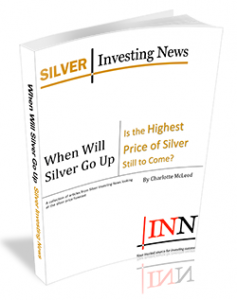Mining is a big part of Australian history, and continues to shape the country’s economy and position in the world today. The nation is one of the world’s top producers and exporters of resources, with coal, uranium, copper and gold being some its best-known commodities.
Australia is also a key producer of silver – it was the world’s fourth-largest producer of silver in 2015, putting out 1,700 MT of the metal. Interestingly, the majority of the country’s silver is produced as a by-product at highly mechanized lead–zinc and/or copper underground mines. Refined silver is mainly produced at the Port Pirie lead smelter and refinery in South Australia, though silver is also refined at gold refineries in Perth, Kalgoorlie and Melbourne.
But while where is silver mined in Australia exactly? While it’s interesting to know what types of deposits the precious metal is found in, many investors want to know what companies are producing the metal and where their mines are located geographically. Read on to find the answers to those questions.
 |
Get Our Expert Guide to Silver Investing FREE!
Download this FREE Special Report, When Will Silver Go Up: Is the Highest Price of Silver Still to Come?
|
Where is silver mined in Australia?
Silver has had a role to play in Australia since the mid-1800s – Wheal Gawler, Australia’s first metal mine, was a silver-lead mine developed in South Australia in the 1840s. And that’s not Australia’s only early silver-mining operation – the Broken Hill deposit in New South Wales and the Mt. Isa deposit in Queensland are two other early Australian silver discoveries.
Broken Hill, a lead-zinc-silver deposit, was discovered in 1883 by German immigrant Charles Rasp, and The Broken Hill Propriety Company was born in 1885; it ultimately merged in 2001 with another mining giant, Billiton, to form BHP Billiton (ASX:BHP,NYSE:BHP,LSE:BLT). BHP Billiton is no longer involved in Broken Hill, but ore is still being extracted there today. For its part, Mt. Isa was discovered in 1923 by prospector John Campbell Miles, and like Broken Hill is still in production today.
These major early Australian silver discoveries are by no means the country’s only sources of silver. The country is also home to the Cannington mine, currently the world’s top primary silver producer. It’s a fly-in, fly-out mining and processing operation that’s owned by South32 (ASX:S32,LSE:S32), a diversified resource company spun out from BHP Billiton in 2015. Cannington also produces lead and zinc.
Australia also holds the McArthur River mine, which opened in 1995 and is owned by Glencore (LSE:GLEN) subsidiary McArthur River Mining. The mine is one of the world’s largest zinc-lead silver mines, and is located in Australia’s Northern Territory.
Connect with our Featured Silver Stocks to receive the latest news and investor presentations.
The Century mine, which belongs to MMG (HKEX:1208), shut its doors at the end of 2015, but was a major producer of zinc (and silver) until that time. MMG sees some output from Century ultimately being replaced by its Dugald River project, but based on the most recent information available, Dugald River looks set to be a much smaller operation.
Smaller Australian silver companies
Argent Minerals (ASX:ARD) owns the Kempfield polymetallic project in New South Wales, which has a mineral resource of 21.8 million tonnes and 52 million ounces of silver equivalent contained metal. It was upgraded to meet JORC standards in May 2014. Argent is currently putting together a drill strategy for Kempfield.
PNX Metals (ASX:PNX) acquired 14 mining leases covering the Iron Blow and Mt Bonnie polymetallic deposits in November 2014; they are located in the Northern Territory, and together they make up the Hayes Creek zinc-gold-silver project. Iron Blow has contained metal values of over 125,000 tonnes of zinc, 200,000 ounces of gold and 10.7 million ounces of silver, and recent drilling at Mt Bonnie has identified significant massive sulfide mineralization containing high values of zinc, gold, silver and lead.
Silver Lake Resources (ASX:SLR) is a gold production and exploration company operating in Western Australia. Its JORC resources and JORC ore reserves stood at 5 million ounces of gold (including 0.8 million ounces in reserve), 10.5 million ounces of silver and 133,650 tonnes of copper as of June 30, 2015.
Silver Mines (ASX:SVL) bills itself as a leading Australian silver exploration company, and has spent a considerable amount of time acquiring Australian silver projects – those include Malachite Resources’ (ASX:MAR) Conrad project and Kingsgate Consolidated’s (ASX:KCN) Bowdens silver project. However, the company’s main focus in the Webbs silver project in New South Wales. According to Silver Mines, Webbs is the highest-grade undeveloped silver project in Australia, and has a JORC-compliant resource of 12 million ounces of silver.
This is an updated version of an article originally published on Silver Investing News on October 3, 2011. Please let us know in the comments if we’ve forgotten to mention any Australian silver companies!
 |
Get Our Expert Guide to Silver Investing FREE!
Download this FREE Special Report, When Will Silver Go Up: Is the Highest Price of Silver Still to Come?
|
Securities Disclosure: I, Charlotte McLeod, hold no direct investment interest in any company mentioned in this article.
Related reading:
10 Top Silver-producing Countries
The post Silver Mining in Australia appeared first on Investing News Network.

Leave A Comment
You must be logged in to post a comment.